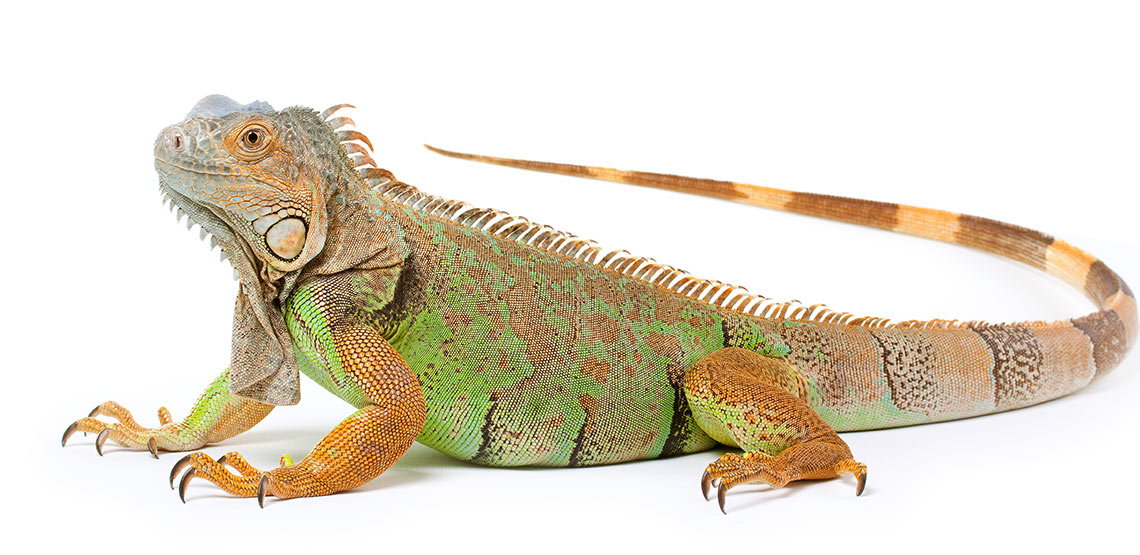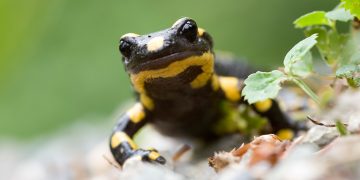A Guide to Owning an Iguana
Iguanas are a great choice of lizard pet if you're willing to put in the time to tame them. They require plenty of handling when they're babies— two or three times a day for roughly 15 minutes —in order to adjust to domestication.
There are two only species of iguana: the green iguana and the Antillean iguana. Green iguanas are by far the most popular choice for a pet.
Origins and Natural Habitat
Iguanas originate from Central and South America, as well as the Caribbean. They generally live in tropical rainforest areas and spend their time in close proximity to water and in forest canopies.
Appearance and Characteristics
Size: Iguanas are larger than most other lizard pets, such as geckos and chameleons. Full-grown iguanas can be as long as 7 feet, half of which length is the tail.
Markings: Iguanas are typically green, but their shading ranges from bright to dull. Some also have pronounced black stripes running up their tails.
Behavior
Iguanas have amazingly sharp vision and hearing, which helps them hunt and communicate. In the wild, their long tail is used as a defense weapon and can break off if caught by a predator. As a pet, they are remarkably docile, enjoy being handled and spend plenty of time basking in the sun.
You May Also Like:
Related Search Topics (Ads):
Health and Care
Feeding: There is debate as to whether iguanas are herbivores or omnivores. Many experts recommend that iguanas only be fed plants, with emphasis on fruits and vegetables such as collard greens, carrots, green beans, figs and apples (avoid iceberg lettuce, as iguanas will get hooked on it and snub other foods). They eat daily, typically in the morning after they've warmed up, and should essentially be fed until they can't eat any more.
Housing: Iguanas require at minimum a 30- to 50-gallon aquarium when young and much bigger enclosures as they grow. Their homes require a substrate such as newspaper or artificial grass, shallow food and water dishes and climbing structures such as rocks, branches or driftwood. The tank should be heated between 85 and 95 degrees Fahrenheit during the day, between 70 and 75 F at night and between 110 and 115 F for basking time. Iguanas need 14 hours of daylight every day, and at least 5 hours of natural sunlight a week. Because of this, it's best to have indoor and outdoor iguana cages. (Note: Avoid glass for outdoor cages, as it will heat up even on cool days.)
Health Concerns: Aside from the usual reptile health concern of parasites, iguanas are susceptible to metabolic bone disease and kidney failure. Both of these conditions can be avoided by regulating your iguana's diet.
Life Expectancy: The average life expectancy of an iguana is between 12 and 15 years, though they can reach up to 20.
Finding Iguanas for Sale
Iguanas are common pets today and are easily found through breeders and pet stores. Before you buy, you should conduct some research to make sure you are ready for the commitment. You can find plenty of material in stores and online on proper iguana supplies, as well as iguana food and iguana care tips to help you get started with your new pet.
Because they are such a common pet, prices for iguanas have dropped considerably. Baby iguanas can cost as little as $20, with adults often being reasonably priced at $100 or less.

